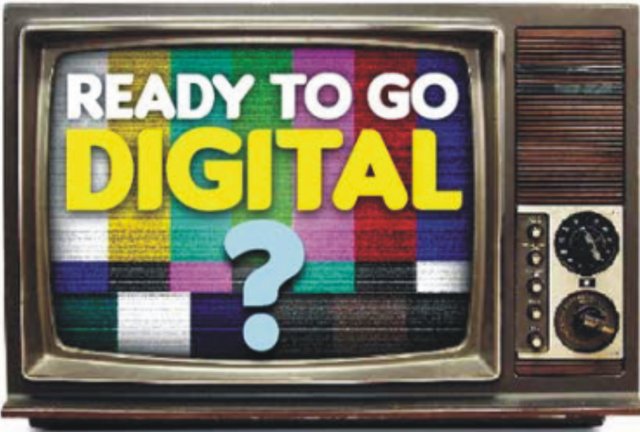Good News for All Nepalese. Goodbye Analogue, Hello Digital
Television in Nepal is on the threshold of a major change as the country adopts an ambitious project to completely replace the current analog cable network with a digital system popularly known as ‘digitization.’ Although the government has been actively pursuing it since 2012, it will finally happen in the next few months. Soon every Nepali home will have a set–up box beside their television.

The path to digitization was set by the Amendment of the National Broadcasting Act, 1993 and National Telecommunication Act, 1995, based on which the government published a notice in 2013 for the Digital Switch-Over (DSO)process to take place over a three year period.
The project will first be implemented across one metropolitan city and four major sub-metropolitan cities within the next three years. The remaining municipalities and other areas will have digital TV channels by 2020 and by 2021 it will be implemented throughout the whole country. The UN’s International Telecommunication Union (ITU) has set 2017 as the deadline for countries to go digital.
The conversion was first laid out by the Ministry of Information and Communication (MoIC) in 2013. However, the process met with delays in 2015 due to the earthquake and the blockade. In the mean time, the government added several sub-metropolitan areas and municipalities, pushing the planned implementation from April 27, 2016 to June.
“Due to the policy uncertainty and lack of preparation of cable operators, the ministry is going to extend the deadline up to Mid-January,” says Sudhir Parajuli, President of Federation of Cable TV Association of Nepal and Chairman of Subisu Cablenet. According to him, the four sub-metropolitans (before the addition) and metropolitan areas will have to be ready for digitisation by Mid-January, municipalities in one year and the remaining areas by the following year.

How it Works
At present, the majority of televisions in Nepal are connected to cable operators via cables. But the transition from analogue to digital terrestrial television broadcasting (DTTB) will obliterate the existing system. After the implementation of the policy, all cable TV operators are required to transmit TV signals in encrypted formats through a digitally addressable system which requires the installation of a set top box for all subscribers. The DSO will enable Nepali viewers to receive enhanced pictures and sound and advanced services such as HD video on demand contents.
Challenges
With the opportunities, come the challenges. “What the government and our federation have been lacking is educating subscribers about the new system,” says Sudhir Parajuli. “When cable operators go to educate the subscribers, the customers take them as business people and do not see the issue seriously. So, the government should come forward to raise awareness among the public.”
The other challenge is meeting the deadline set by the government. Though DTH operators and many cable service providers are ready to implement the policy, many cable operators across the country are not ready yet for digitisation.
During the conversion, a deficiency in manpower is also likely to create problems. According to Parajuli, normally it takes 40-60 minutes to install a set-top box and guide a subscriber about the use of the system. There are around 600,000 families, counting one family per home in the Kathmandu Valley alone, which makes it cumbersome for operators to complete the process of installation and guiding the subscribers on the new system. Similarly, the financial burden to subscribers is another area of concern as they have to pay separately for set-top boxes and also have to bear other associated costs.
“The government should provide concessions on import duties of set-top boxes to reduce the financial burden to subscribers,” suggests Parajuli. “Likewise, tax subsidies for those who are willing to set up DTTB transmitters in remote areas are also necessary.”
Competition and Preparation
The conversion to digital has also led to a sharp increase in competition for customers among major DTH and cable operators. Companies such as Dish Home, Subisu, Sim TV and Broad TV have come up with new schemes on their digital TV systems. Similarly, established cable TV operators such as Space Time Network and Sky Cable have also introduced digital services as a part of their preparations to go fully digital.
“We have been providing the digital service for the last four years. So, we are fully prepared for the new regulation,” says Dish Home DGM Adhikari. Similarly, Subisu is all set to provide digital services to its subscribers. “We are ready for the four sub-metropolitan areas and one metropolitan city,” informs Subisu CEO Parajuli. According to him, the company is rapidly working to convert its analogue system to digital all across the country.
Meanwhile, Broad TV which is a new entrant in the market, is also expanding its services. “We can provide services across the country as our system is based on the internet,” notes Balvadra Adhikari, CEO of Broad TV.
good one.